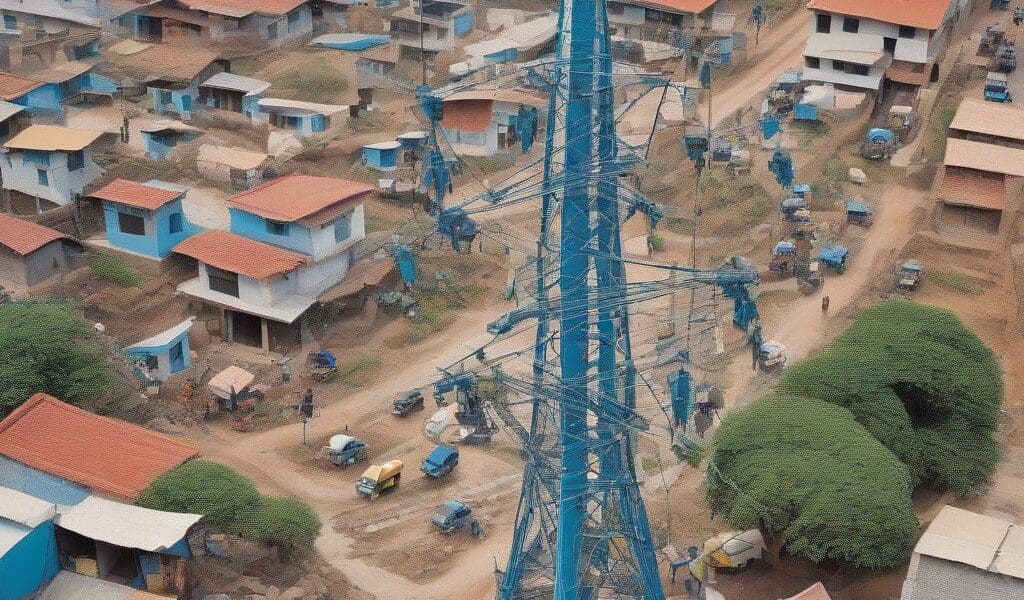India’s Strategic Overhaul of Telecommunications for Inclusive Growth
The Indian government’s ambitious strategy to transform its telecommunications sector aims not only to enhance connectivity but also to foster inclusive economic growth. With the goal of digitally empowering the nation, the government is implementing a series of initiatives that highlight its commitment to expanding digital access across all regions, especially in remote and underserved areas.
One of the most notable developments has been the rollout of numerous 4G towers across the country. With over 7,100 new towers commissioned, the government is making significant strides toward ensuring that all citizens, regardless of their location, have reliable access to mobile connectivity. This expansion is crucial, as it connects rural populations to essential services and technologies, which can greatly improve their quality of life and economic prospects.
Additionally, the launch of the Bharat 6G Vision marks a significant milestone in India’s telecommunications journey. This initiative sets an ambitious target for India to take a leading role in the global telecommunications landscape, specifically aiming to design, develop, and deploy 6G technology by 2030. This commitment not only positions India as a future technology leader but also demonstrates its proactive approach to shaping the future of global telecommunications.
Economic growth is parallelly supported through initiatives such as the Production Linked Incentive (PLI) scheme. This program focuses on bolstering domestic manufacturing, creating new employment opportunities, and attracting foreign investments. By incentivizing local production, the government is not only enhancing the telecommunications infrastructure but also developing a robust ecosystem for startups and micro-enterprises. These financial incentives help mitigate operational costs, paving the way for innovation and entrepreneurship in the sector.
The modernization of the telecommunications regulatory framework is another critical component of India’s strategy. The enactment of the Telecommunications Act of 2023 is a transformative step towards replacing outdated laws with updated provisions that emphasize national security and public safety. This new legislative framework is designed to adapt to the rapidly changing technological landscape, ensuring that India’s telecommunications infrastructure can support future growth effectively.
To enhance cybersecurity, the establishment of a Digital Intelligence Platform is vital for fostering real-time information sharing among law enforcement and financial institutions. This platform aims to bolster the safety and security of India’s telecommunications environment, which is increasingly susceptible to cyber threats. By enhancing these protective measures, the government not only safeguards its infrastructure but also builds trust among users.
In alignment with environmental considerations, initiatives such as the ‘Ek Ped Maa Ke Naam’ app demonstrate the government’s commitment to integrating technology with social responsibility. This app encourages citizens to plant trees in honor of their mothers, thus promoting environmental sustainability while leveraging modern technology.
A significant focus on enhancing access through these initiatives lays the groundwork for digital inclusion, targeting historically marginalized communities. By prioritizing connectivity and infrastructure development in neglected areas, the Indian government recognizes that effective telecommunications can bridge the economic divide, empowering individuals with greater access to information and opportunities.
The ripple effect of these transformative initiatives will extend beyond the telecommunications sector, driving advancements across various industries, including agriculture, education, and healthcare. For example, improved connectivity can facilitate better access to educational resources for students in rural areas, transforming their learning experiences.
Moreover, as foreign investments are attracted into the telecommunications sector, there is potential for innovation to flourish. International partnerships can bring cutting-edge technologies to India, fostering an environment ripe for digital transformation.
In conclusion, India’s comprehensive strategy to revolutionize telecommunications revolves around enhancing connectivity, driving economic growth, and fostering inclusive development. With a clear vision and strong commitment to regulatory reform and infrastructure expansion, the Indian government is positioned to make significant strides in bridging the digital divide. As these initiatives continue to unfold, they will undoubtedly pave the way for a more connected, inclusive, and digitally empowered nation.








